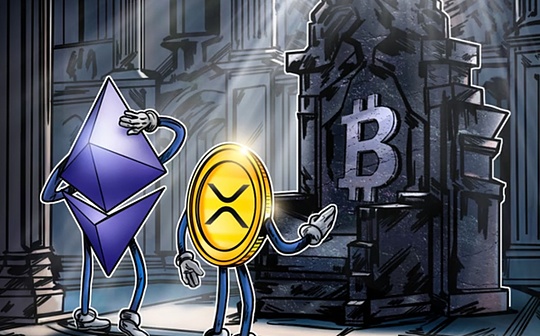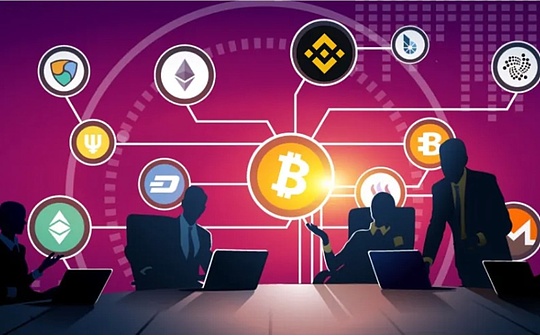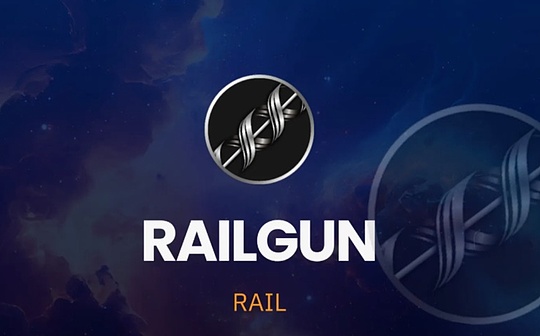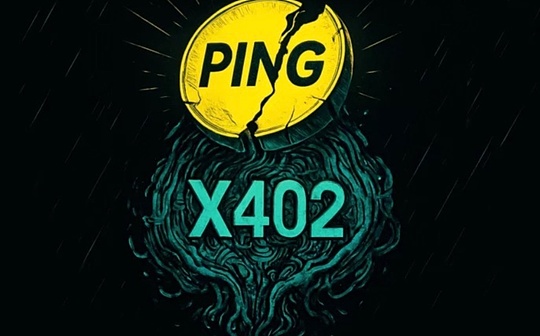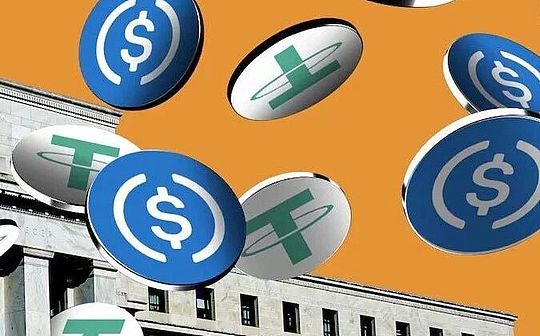
If 2020-2022 is regarded as “testing the waters” and 2023-2024 is called “exploring”, then the stablecoin picture in 2025 has already entered the “full speed ahead” stage.
It’s growing much faster than expected: annual stablecoin transfers have soared from a paltry $3.3 billion in 2018 to $18.4 trillion in 2024.
This figure not only marks its transformation from a niche experiment to a global payments backbone, but also means that it has surpassed the annual processing scale of traditional payment giants Visa ($15.7 trillion) and Mastercard ($9.8 trillion).
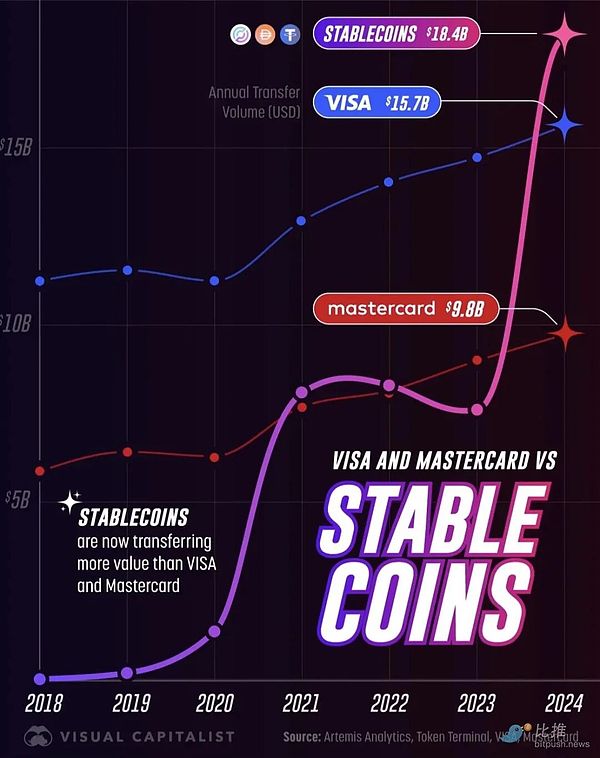
Source: Visual Capitalist
In the past month, several landmark events have brought this narrative to the forefront:
-
Citi officially partners withCoinbaseForm a partnership to expand digital asset payment capabilities for institutional customers;
-
Nine major European banks have formed a euro stablecoin consortium, which is expected to be issued in 2026;
-
Western Union announces plans for 2026SolanaThe US dollar stable currency USDPT is launched, and issuance and custody are undertaken by Anchorage Digital Bank;
-
Visa disclosed that it is expanding settlement support for four stablecoins on four new chains.
At the capital level, according to Fortune Magazine,MastercardProposed acquisition of stablecoin/crypto infrastructure company for $1.5-2 billionZero Hash, and had earlier been involved with CoinbaseikBlaunch a “bidding” for the acquisition.
Putting these pieces together reveals a clear trend: In the race for future financial dominance, traditional financial giants are unwilling to fall behind and are promoting the comprehensive transformation of their core businesses—from payment networks to cross-border settlements—to on-chain programmable systems.
Banks: Stablecoins vs. Tokenized Deposits
As traditional banks begin to embrace digital assets, they find themselves facing two different paths: stablecoins and tokenized deposits.
At the beginning, Citi CEO Jane Fraser said that she valued tokenized deposits more than the popular stablecoins on the market.This is not to say that stablecoins are bad, but that tokenized deposits are more “comfortable” for banks:
-
Tokenized deposits (the bank’s “internal” rail): Banks like it because it essentially turns the money customers have in the bank (deposits) into digital tokens.It’s like being issued a digital passport to your existing bank account.It is completely under the eyes of existing regulatory agencies (such as the central bank), is very safe and compliant, and can be seamlessly connected to the traditional clearing system of banks, allowing banks to complete fund settlements 24 hours a day, 7 days a week.For banks, this is the option with the least friction and the most regulatory peace of mind.
But it’s not enough to have a bank’s own “inner rails.”
-
Stablecoins (the “outside” rail of banks): Banks are also realizing that they must use stablecoins if they want to connect to the entire crypto world and those popular “public chains” like Ethereum.These stablecoins are like the universal currency of the crypto world.
Citibank therefore acted very smartly: while signaling a preference for tokenized deposits, it quickly announced a partnership with Coinbase.
There is only one ultimate goal of walking on two legs like this: No matter whether the future capital network is based on the public chain or the banking system, traditional banks must master these two kinds of “digital money” at the same time and continue to become an important part of the new financial system.The core “trust and clearing center”.
In Europe, nine banks (UniCredit, ING, Banca Sella, KBC, Danske, DekaBank, SEB, CaixaBank, Raiffeisen) jointly promoted the euro stable currency, set up a company in the Netherlands, and applied for an electronic money institution license under MiCA, with plans to launch it as early as the second half of 2026.This design emphasizes “compliance, 1:1 reserve, and can be used in public chains.” Its straightforward goal is to create a local digital payment rail in Europe and hedge against the spillover effects of US dollar stablecoins in the European payment environment.From presentation to organizational structure, this is an infrastructure battle of “bank-led, benchmarking public chain ecology”.
Western Union: Using Stablecoins to Open the “Cash Terminal”
Unlike traditional banking giants that focus on internal “clearing-settlement” efficiency upgrades, the established cross-border remittance giant Western Union regards stablecoins as its core business – a channel upgrade for cross-border retail remittances.
Western Union is one of the world’s largest cross-border remittance companies. Its strong advantage lies not in its sophisticated financial technology, but in its huge network of physical outlets around the world.Especially in developing countries, it controls the “last mile” of funds being transferred from digital form to physical cash, and is a lifeline for many unbanked users to obtain funds.
Western Union’s strategic goal is very clear: turn stablecoins into a “highway” for its remittance channels, and combine them with a strong cash network to form a smooth closed loop.
-
Select channel: Western Union chose to work withAnchorageDigital Bank cooperates to issue the stablecoin USDPT and chooses the Solana public chain as its operating network.The key to choosing Solana is its high throughput and extremely low fees, which are critical for high-frequency, low-value retail remittances.
-
Build a network: The company simultaneously launched the Digital Asset Network, with the goal of making the entire process a smooth closed loop: external wallet → stablecoin remittance → local cash withdrawal/deposit
-
Meet user needs: For those users in developing countries who rely on cash, what they care about is not “whether the funds are on the blockchain”, but three core pain points: “whether the funds can be received on the spot”, “whether nearby outlets can withdraw cash immediately” and “whether the handling fee is cheap.”
This is the genius of Western Union: it hides the complexity of financial infrastructure behind the scenes, uses the efficiency advantages of stablecoins and public chains to serve the cash-intensive scenarios it is best at, and consolidates its position in the global retail remittance market.
The battle among card giants: connectors vs. acquirers
Compared with banks’ traditional clearing systems and Western Union’s cash network, Visa and Mastercard are accelerating the integration of stablecoins from the perspective of global payment networks, but they have taken different routes:
1. Visa: Transformed into a “multi-chain clearing router”
Visa’s narrative and strategy increasingly resembles that of a “multi-chain clearing network operator.”During this fiscal year, Visa added settlement support for four public chains and four stablecoins, and funds on these chains can be exchanged for more than 25 fiat currencies.
Visa highlighted in its financial report that stablecoin-linked card transactions surged year-on-year.This shows that its core capability lies in “opening the rails”: it is using its vast card network to act as a router between traditional bank accounts and on-chain digital funds, allowing banks, merchants and ordinary wallet users to seamlessly conduct cross-chain settlements.
2. Mastercard: Gain time through “flash acquisitions”
Different from Visa’s “connection” strategy, Mastercard’s capital actions are more sharp and direct:
It plans to spend US$1.5-2 billion to acquire Zerohash to quickly complete its back-end technology puzzle in stablecoin/crypto settlement.Immediately afterwards, Mastercard was also revealed to be in in-depth discussions with Coinbase to acquire BVNK at the same time, with the price rumored to be as high as US$2-2.5 billion.
Mastercard’s route is to acquire infrastructure in exchange for time on the “main track of on-chain payments”.Compared with lengthy internal construction, acquisitions can quickly internalize core capabilities such as compliance custody, wallet routing, fund anchoring and redemption, and on-chain risk control, and then quickly push them to its global network of issuing banks, acquiring banks, and merchants.
Both card organizations see stablecoins as central to the future of payments, but Visa is good at connecting, while Mastercard prefers to control infrastructure quickly.
The risk has not left the market
Although global giants are accelerating on the stablecoin track, this road is full of huge challenges that have not yet been solved.For banks and card organizations, the biggest problem is not the technology itself, but how to deal with these non-technical “stumbling blocks.”
1. The “invasion” of US dollar stablecoins
The global expansion of stablecoins has directly touched the most sensitive nerve of governments: monetary sovereignty.
Imagine if USD stablecoins began to dominate daily payments in a small country, it would essentially undermine the ability of that country’s central bank to manage the economy.This “digital dollarization” phenomenon will inevitably lead to strong backlash from local regulatory agencies.
This is why Europe has chosen to take a controlled path – they prefer to implement stablecoins in their own currencies (such as the euro) and work with a consortium of local banks to ensure that control of the currency cannot be easily lost.
2. Stress test of “trust”: on-chain robustness
To move financial “bank-level soundness” to the blockchain, issuers and clearing parties must always be prepared to deal with trust crises and technical attacks:
-
Runs and Reserves: Can stablecoins withstand pressure if massive redemptions (i.e. runs) occur?
-
Crisis on the chain: The platform must withstand a series of technical and operational risks such as insufficient liquidity, fluctuations in reserve assets, network congestion, and hacker attacks.
3. Realistic threshold: the compliance quagmire of “cash”
For Western Union, a model focused on converting digital funds into physical cash (the “last mile”), incorporating on-chain efficiencies into daily adoption scenarios requires surmounting numerous legal hurdles: Western Union must simultaneously meet strict anti-money laundering (AML) requirements, complex foreign exchange regulations, and apply for multi-jurisdictional operating licenses in every country in which it operates.
Therefore, if you want to build a global digital financial network, the complexity of compliance engineering and operational management is far greater than the technical integration of “accessing several chains”.This is the fundamental reason why giants such as Visa, Mastercard and Citigroup choose to “join together for warmth” or “spend money on mergers and acquisitions” – they simply cannot overcome these strict non-technical barriers on their own.
Conclusion
Let’s read this month’s news together.The essence of the stablecoin wave is not a victory for the crypto camp, but a silent revolution in financial infrastructure.
When “account + stablecoin” becomes a parallel structure, users will almost no longer perceive the boundaries of “on-chain/off-chain” and will only see faster arrival, lower fees and a more stable experience.
At this point, the outcome returns to familiar variables: network size, rate curve, merchant expansion, risk control and compliance execution.This is why in Q4 of 2025, traditional financial options will no longer sit on the sidelines.

